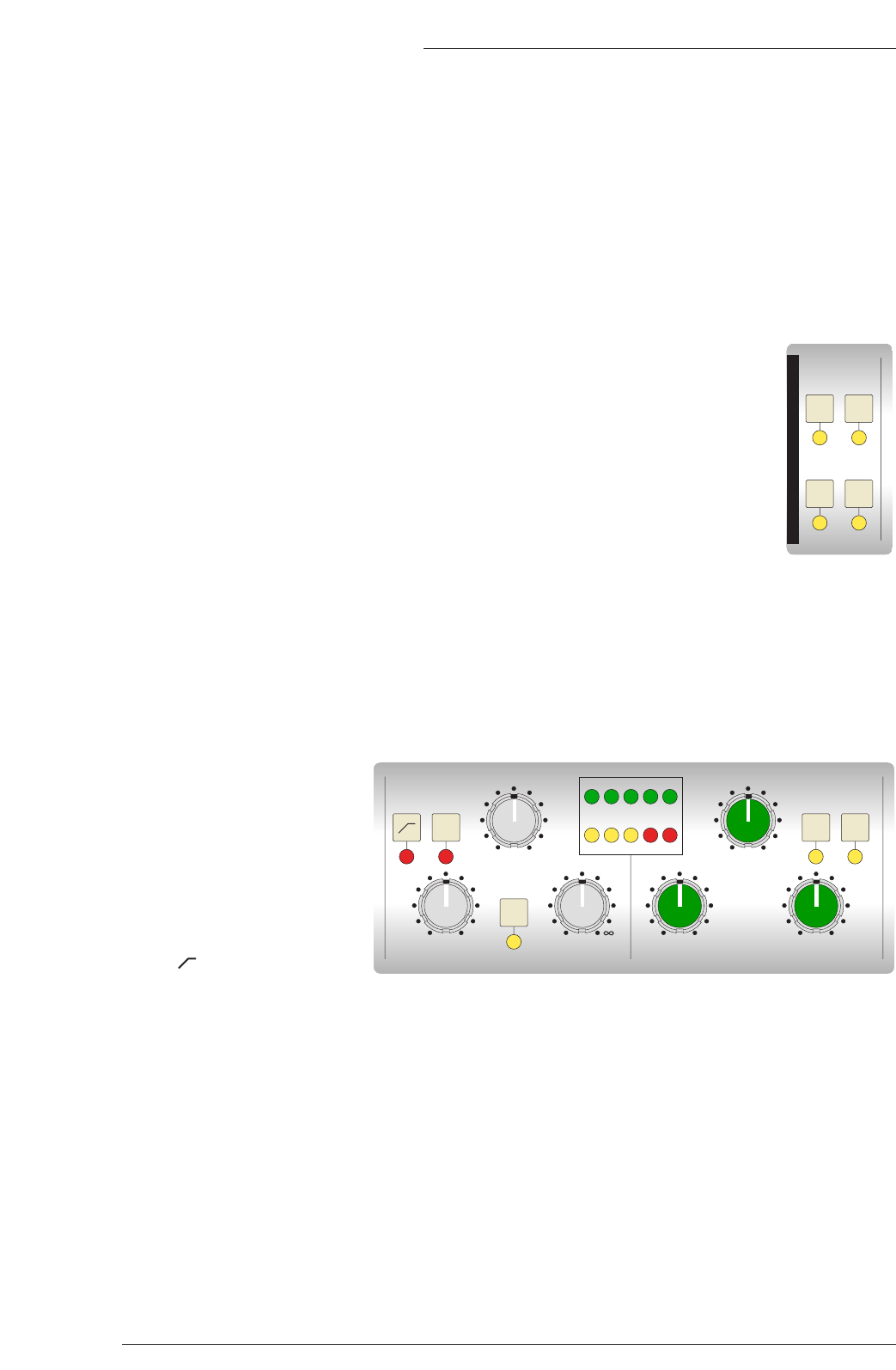
Page 10
XLogic E Signature™ Channel Owner’s Manual
4.3 Dynamics Section
The Dynamics section of the XLogic E Signature Channel unit comprises a compressor/limiter and an
expander/gate, both of which use the same gain change element. The design returns faithfully to the
circuit and key components which defined the sound of the original E Series channel strip. A true RMS
converter is used in the side chain whilst the gain element is an all discrete design identical to the Class A
VCA chip used in the original unit. The compressor contains additional switching options to defeat the
over-easy curve and to use a linear release instead of the more usual logarithmic curve. The result is a
compressor with three distinct voicings, all of which contributed to the many classic records tracked and
mixed on early E Series consoles.
As in the original E Series channel strip, the Filter and/or the Equaliser section can be assigned to the
dynamics side chain allowing de-essing etc.
The Dynamics section has some master function buttons associated with it. Section 5
deals with Dynamics routing in more detail, but briefly these buttons function as
follows:
DYN IN – Switches the Dynamics section into the signal path, post the EQ.
PRE EQ – Places the Dynamics section pre the EQ section (but post the Filter section if
the Filter INPUT switch is pressed).
KEY – Switches the Dynamics side chain to the ‘KEY’ input on the rear panel of the unit.
If you have more than one unit and have connected the ‘LINK’ jacks on the rear of the
units together, the side chain control signals of multiple units can be linked by pressing
the LINK switch on those units you wish to gang. When two Dynamics sections are
linked, the control voltages of each section sum together, so that whichever section has
the most gain reduction will control the other section.
Don’t try to link two gates using the LINK switch when you want the signal on one to open the other. If you need to
achieve this effect, take a keying signal from one section to trigger the other. The easiest way to do this is by patching
from the output of the ‘source’ channel into the ‘KEY’ input of the ‘destination’ channel, and selecting KEY (see
above) on this channel.
4.4 Compressor/Limiter
RATIO – When turned to 1:1, the
Compressor/Limiter section is
inactive. Turning the control
clockwise increases the
compression ratio to give a true
limiter at the fully clockwise
position.
The compressor ordinarily has
an ‘over-easy’ characteristic.
Selecting changes this to
peak sensing, and replaces the
’over-easy’ characteristic with a ‘hard knee’, providing an alternative for some instruments.
THRESHOLD – Whenever a signal exceeds the level set by this control, the compressor will start to act at
the ratio set by the RATIO control. This control also provides automatic make-up gain, so as you lower the
threshold and introduce more compression, the output level is increased, maintaining a steady output
level regardless of the amount of compression.
RELEASE – Sets the time constant (speed) with which the compressor returns to normal gain settings once
the signal has passed its maximum.
FAST ATT – Provides a faster attack time (3mS for 20dB gain reduction). When off the attack time is slower
and less aggressive (30mS for 20dB gain reduction).
LIN REL – Changes the release curve from logarithmic to linear. This also raises the threshold by 6dB.
The yellow and red LEDs, on the bottom of the LED display area, indicate the amount of gain reduction
(compression).
RELEASE
COMPRESSOR GATE
3 6 10 14 20
RATIO RELEASE RANGE
T/HOLD T/HOLD
.1 4 1 .1 4 0 40
0
-20+10
0
+10-30
FAST
ATK
LIN
REL
FAST
ATK
EXP
DYNAMICS
KEY LINK
DYN
IN
PRE
EQ


















